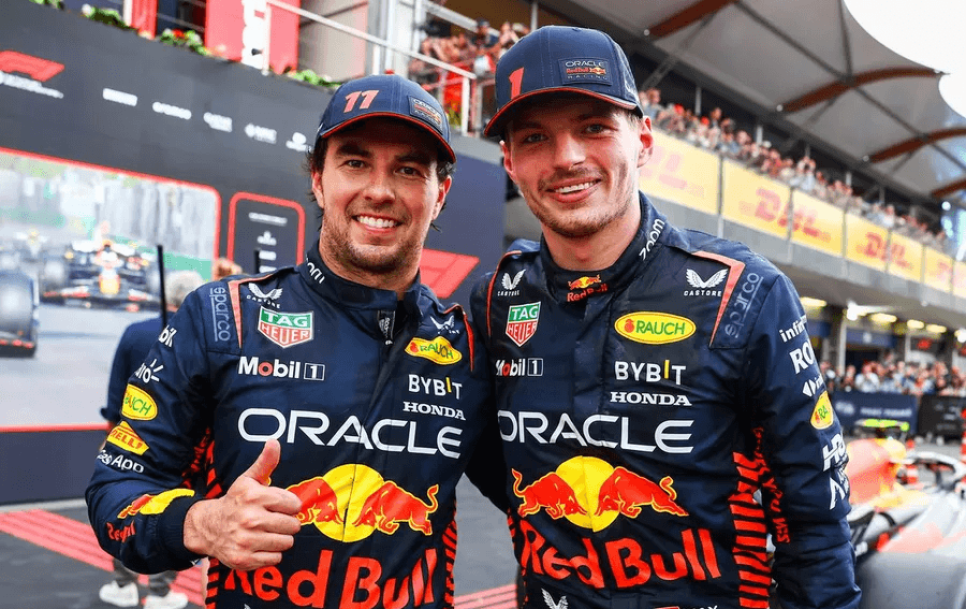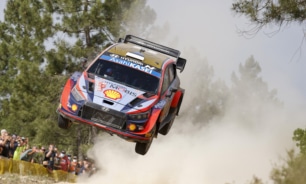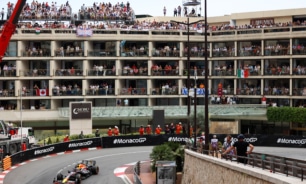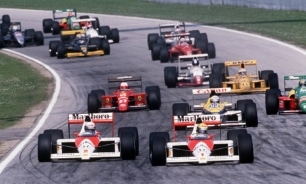F1 has a problem, and it is not just Red Bull
Formula 1 has done a whole lot right since Liberty Media took over in 2017. While the domination of Max Verstappen and Red Bull is all over the headlines, more severe problems lurk in the background.
During Rally Sardegna, drivers of the World Rally Championship gathered for an impromptu meeting. It probably should have happened a long time ago, but better late than never, right? The future has rarely seemed gloomier.
For those not familiar, WRC is the equivalent of F1 when it comes to racing cars in the woods at 180 kilometers per hour. Currently, just two and a half car manufacturers compete. There are usually nine or ten Rally1 – the top level – entries for a rally. Just seven drivers are set to complete the whole season in 2023, with two of them not considered overly competitive.
On the beautiful island roads of Sardinia, just three Rally1 cars made it to the finish line without serious issues. Three broke down after water crossings, one slid off the road, one retired due to exhaust failure and one had its steering rod twisted. Take the M-Sport Ford of Ott Tänak: in just six rallies, the Puma has had issues with the turbo, the hydraulic pump, the handbrake, the electric system …
And despite all of the above, the 2023 WRC season has been fiercely entertaining. Six rallies have produced five different winners and nothing can be taken for granted. Much could – and probably should – be changed for the better and there are serious question marks over the WRC future, but considering the here and now, it has been brilliantly competitive. Unlike F1.
Seven out of seven
The numbers of course speak in favour of Formula 1. Ten teams, six of them connected to a manufacturer one way or another, and two more set to join in 2026. 20 drivers, with 18 of them already collecting points and a strong seven making the podium in 2023.
What the WRC lacks in mid-table competition, F1 has in abundance. But at the end of the day, only a handful of hard-core fans care which team finishes fourth, sixth, or ninth in the constuctors championship. Winning matters. And for others to win in 2023, the mighty Red Bull has to fail miserably.
Reigning world champion Max Verstappen has five wins to go with two second-place finishes; with Sergio Perez winning in Saudi Arabia and Azerbaijan, Red Bull has not lost a single race this season. Four times they have managed a one-two finish. With two-thirds of the season yet to come, both the drivers and constructors’ titles seem like a foregone conclusion.
Since Liberty Media took over Formula 1 in 2017, they worked hard to reach a wider audience. Drive to Survive, the Netflix documentary, was a massive hit. A focus on social media helped connect to younger fans. A budget cap has levelled the playing field to some extent. And after years of Mercedes’ dominance, F1 had the perfect season with a grande finale in 2021. But the domination of Red Bull has raised further issues.
A race of strategists
What is now essentially working against Formula 1 is something that used to be a problem for decades before – overtaking, or rather the ability to overtake. Back in the day, it used to be too difficult; now, it is too easy. As it turned out, more is not always better.
With newer cars, drivers should be able to follow closer than ever before, not to mention the Drag Reduction System which enables the pursuing car to open up a space in the rear wing to increase straight-line speed in certain zones. The cars are also bigger and heavier than ever before. As a result, drivers play it safe most of the time.
In Saudi Arabia, Verstappen started 15th but was up to second by lap 25. In Miami, he was ninth on the grid but second by lap 15. One could argue that Red Bull is vastly superior to the competitors, but what we do not see are man-to-man battles in those situations – most drivers acknowledge that they can not keep Verstappen behind for the whole race, so they will not even put up a fight.
A Safety Car period could sometimes upset the strategies laid out before the race, but for that to occur, something would have to happen on the track first. It rarely does. Most modern tracks do not punish mistakes as run-off areas are often covered with asphalt, and the machines rarely fail their drivers. From a total of 140 starts this season, just six have ended due to some sort of mechanical or technical failure.
Time for a change
Simply put, Formula 1 is getting too sterile. The WRC is wild and unpredictable, but lacking any sort of direction; F1 has laid a good foundation, but for it to prosper, proper fighting needs to return. Otherwise, it is just a very expensive game of chess with cars. History remembers the champions, true. But the battles are no less important.
The 2021 epic final fight between Verstappen and Lewis Hamilton also had Perez keeping the Mercedes man at bay for some valuable time; remember Nico Rosberg outlasting Hamilton in 2016, or Vitaly Petrov of all people denying Fernando Alonso a title chance in Abu Dhabi 2010? Or the Timo Glock pass in 2008? Any of the Trulli Trains? Alonso’s first great battle with Michael Schumacher in Imola 2005?
All those and many, many more races and moments have gone down in F1 folklore. Some elements of Formula 1 will probably never return and with safety a matter of utmost importance, the light, nimble cars of older days will remain in the museums forever. But the best drivers in the world going toe-to-toe? No one can forbid that.
The best possible outcome for 2023 would probably see a title fight between Verstappen and Perez reignited, but for that to happen, the Dutchman needs more than one DNF – with none in his previous 26 races, it seems far-fetched. As for the future, something needs to change.










